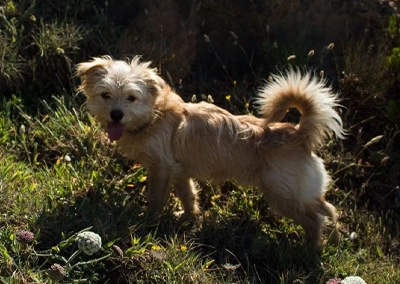Village dogs in Eastern Europe have likely descended from ancient indigenous dogs that have lived alongside humans for thousands of years. These dogs were often used for guarding, herding, hunting, and companionship. They historically played important working roles in rural communities. They assisted with various tasks, including guarding livestock, controlling vermin, and providing companionship to their human companions. Village dogs in Eastern Europe underwent natural selection processes, with survival of the fittest shaping their genetic makeup. Traits that were advantageous for survival in their environment, such as intelligence, resilience, and adaptability, became more prevalent in the population. Due to the lack of breed standards and controlled breeding practices, village dogs in Eastern Europe are often mixed-breed dogs with diverse ancestry. Crossbreeding occurred naturally, leading to a wide range of physical appearances and temperaments within the population.
Village Dog Eastern European

